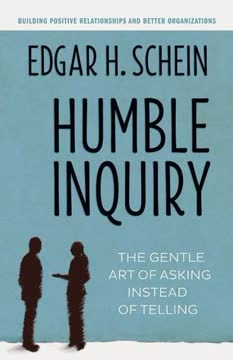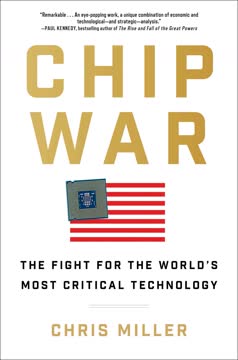重点摘要
1. 动力被扭曲:揭穿常见误区,专注于进步
事物会被扭曲。
动力误区比比皆是。 许多关于动力的流行观点,如积极思维的力量或奖励的有效性,要么被夸大,要么被误解。这些误区可能导致无效的策略和令人失望的结果。
专注于进步,而非成功。 与其执着于最终目标或依赖激励演讲,不如专注于创建支持稳步进步的结构。这种方法与研究结果一致,显示进步感是工作中最强大的动力。
- 揭穿误区:
- 积极思维本身并不能带来成功
- 奖励有时会削弱内在动力
- 目标设定并不总是有效,尤其是对于复杂任务
- 强调进步:
- 创建可见的进步标记
- 庆祝小胜利
- 设计提供频繁反馈的工作流程
2. 改变虽难但必要:接受挑战和不适
现实被打破。游戏设计师可以修复它。
改变是不可避免且必要的。 在当今快速发展的世界中,组织和个人必须适应以保持相关性和竞争力。然而,改变常常带来不适和抵抗,必须予以承认和解决。
像游戏设计师一样对待改变。 通过将改变计划框架化为精心设计的游戏,我们可以使过程更具吸引力和不那么令人生畏。这种方法利用了我们在结构化环境中应对挑战和寻求进步的自然倾向。
- 精心设计的改变特征:
- 明确的目标
- 可管理的挑战
- 频繁的反馈
- 可见的进步标记
- 掌握的机会
- 游戏化方法的好处:
- 增加参与度
- 减少抵抗
- 增强问题解决能力
- 改善协作
3. 巨大的动力差距:弥合当前状态与期望状态之间的鸿沟
所有进步、成长和改变都存在于这个差距中。
理解动力差距。 我们所在的位置与我们想要到达的位置之间的空间是动力和进步的温床。这个差距创造了建设性的不满,可以用来推动改变。
设计跨越差距的桥梁。 为了保持动力,我们需要创建使跨越差距的旅程更易管理和更有回报的结构。这涉及将大目标分解为较小的、可实现的里程碑,并在过程中提供明确的反馈。
- 动力差距的要素:
- 当前状态(我们所在的位置)
- 期望状态(我们想要到达的位置)
- 之间的旅程(改变的过程)
- 弥合差距的策略:
- 设定临近目标
- 创建可见的进步标记
- 提供频繁的反馈
- 庆祝小胜利
- 调整挑战以保持流动
4. 所有改变游戏规则的秘诀:让进步可见
让进步可见。
可见性是动力的关键。 当人们能够清楚地看到他们的努力如何促进进步时,他们更有可能保持参与和动力。这一原则适用于个人任务和组织计划。
设计进步的可见性。 创建使进步易于跟踪和理解的系统和工具。这可以从简单的清单到更复杂的项目管理软件,但关键是确保进步始终如一地被清晰传达。
- 使进步可见的方法:
- 使用进度条或图表
- 实施定期检查或站立会议
- 创建项目进展的公共展示
- 利用数字工具进行实时进度跟踪
- 可见进步的好处:
- 增加动力
- 更好地专注于重要任务
- 增强成就感
- 改善团队一致性
5. 进入游戏状态:理解游戏设计的力量
游戏只是目标、规则和反馈之间的相互作用。
游戏不仅仅是娱乐。 游戏设计的原则可以应用于工作和生活,以创造更具吸引力和动力的体验。理解这些原则使我们能够重新设计应对挑战和改变的方法。
将游戏设计元素应用于工作。 通过在工作流程中融入明确的目标、明确的规则和频繁的反馈,我们可以创造更具吸引力和生产力的环境。这种方法利用了我们寻求进步和克服挑战的自然倾向。
- 游戏设计的关键元素:
- 目标:明确的奋斗目标
- 规则:塑造行为和策略的约束
- 反馈:关于进展和表现的信息
- 工作中游戏化设计的好处:
- 增加参与度
- 增强问题解决能力
- 改善协作
- 在面对挫折时更具韧性
6. 改变游戏规则模型:整合目标、规则和反馈
改变游戏规则的是那个新引入的元素,它对正在进行的游戏产生了重大影响。
理解改变游戏规则的模型。 该框架整合了动力和游戏设计的关键元素,以创建更有效的工作和改变方法。它提供了一种结构化的方式来分析和改进现有流程。
将模型应用于你的挑战。 通过系统地检查和调整工作或改变计划中的目标、规则和反馈,你可以发现改进的机会,并创造更具吸引力和动力的体验。
- 改变游戏规则模型的组成部分:
- 火花:核心目标或意图
- 行动层:具体的、可操作的步骤
- 项目层:行动的组织和排序
- 游戏层:动力设计元素
- 改变游戏规则者:调整游戏的元层视角
- 应用过程:
- 确定当前的“游戏”(工作流程或改变计划)
- 使用模型分析其组成部分
- 识别改进领域
- 实施改变并监控结果
7. 提升你的游戏:克服自我破坏并提出正确的问题
我们非常擅长妨碍自己。
识别并解决自我破坏。 我们中的许多人无意识地通过拖延、完美主义或过度承诺来破坏自己的进步。识别这些模式是克服它们的第一步。
提出正确的问题以改进你的游戏。 通过系统地检查你的目标、规则和反馈过程,你可以发现改进领域并设计更好的应对挑战的方法。
- 常见的自我破坏形式:
- 拖延
- 完美主义
- 过度承诺
- “太忙”而无法进步
- 环境借口
- 需要问的关键问题:
- 目标:它们是否明确、有意义且适当具有挑战性?
- 规则:它们是否支持进步并允许自主性?
- 反馈:进步是否可见且频繁传达?
8. 改变游戏:实施任务、探索和仪式
如果你不改变方向,你可能会到达你正在前进的地方。
将工作设计为任务和探索。 将工作框架化为任务(明确的目标)和探索(探索性挑战)可以使其更具吸引力和意义。这种方法提供了结构和灵活性。
建立支持改变的仪式。 定期的实践和例行公事可以强化期望的行为并创造进步感。这些仪式可以从每日站立会议到季度审查会议不等。
- 任务和探索的特征:
- 任务:明确的目标,定义的路径
- 探索:探索性挑战,强调学习
- 有效仪式的例子:
- 每日站立会议(7-12分钟)
- 每周进度审查
- 季度项目规划会议
- 年度文化书籍创建(如Zappos)
- 这种方法的好处:
- 增加参与度
- 更好地与组织目标对齐
- 增强对变化的适应性
- 加强团队凝聚力
最后更新日期:
FAQ
What's "The Game Changer" about?
- Purpose of the book: "The Game Changer" by Jason Fox explores how to use the science of motivation combined with game design principles to influence behavior, shape culture, and drive progress in organizations.
- Core concept: The book introduces the idea of changing the "game" at work by tweaking goals, rules, and feedback to enhance motivation and productivity.
- Target audience: It is aimed at leaders, managers, and anyone interested in improving motivation and engagement in their teams or organizations.
- Practical application: The book provides strategies and models to implement these concepts in real-world scenarios, making work more engaging and effective.
Why should I read "The Game Changer"?
- Innovative approach: The book offers a fresh perspective on motivation by integrating game design principles, which is not commonly found in traditional management literature.
- Evidence-based insights: It debunks common motivational myths and provides evidence-based strategies to enhance motivation and productivity.
- Practical tools: Readers gain access to practical tools and models that can be directly applied to improve workplace dynamics and culture.
- Broader impact: Understanding these concepts can lead to significant improvements in personal productivity and organizational success.
What are the key takeaways of "The Game Changer"?
- Progress principle: Making progress visible is crucial for sustaining motivation and engagement in any task or project.
- Game design elements: Goals, rules, and feedback are the core components of any game and can be applied to work to enhance motivation.
- Intrinsic motivation: Purpose, mastery, and autonomy are essential for fostering intrinsic motivation, which is more sustainable than extrinsic rewards.
- Iterative approach: Change and progress require a continuous process of experimentation and iteration, rather than one-time solutions.
How does Jason Fox define a "game changer"?
- Definition: A "game changer" is a newly introduced element or factor that significantly alters an existing situation or activity.
- Role in motivation: It involves changing the parameters of work to make it more engaging and motivating.
- Application: By identifying and implementing game-changing elements, organizations can shift behavior and culture effectively.
- Outcome: The goal is to create a work environment where progress and motivation are inherent, leading to better outcomes.
What is the "Progress Principle" in "The Game Changer"?
- Core idea: The Progress Principle states that a clear sense of progress is the most significant factor in motivating people at work.
- Feedback loops: Reducing the latency between effort and feedback enhances motivation by making progress visible.
- Practical application: Organizations should focus on creating structures that provide immediate and meaningful feedback to sustain motivation.
- Impact on work: When employees see how their efforts contribute to progress, they are more likely to remain engaged and motivated.
How does "The Game Changer" address self-sabotage?
- Common forms: The book identifies procrastination, perfectionism, and overcommitment as common forms of self-sabotage.
- Strategies to overcome: It suggests making progress visible, setting clear goals, and creating supportive structures to mitigate self-sabotage.
- Role of visibility: By enhancing the visibility of progress, individuals can better manage their time and focus on what truly matters.
- Behavioral change: The book emphasizes changing the game to alter behavior, rather than trying to change motivation directly.
What are the myths about games discussed in "The Game Changer"?
- Myth #1: Games are only for young people or those avoiding work. The book debunks this by showing that games are a universal and engaging form of work.
- Myth #2: People play games just to win. In reality, games are about mastering challenges and experiencing progress.
- Myth #3: Games are an escape from hard work. The book argues that well-designed games are challenging work that people willingly engage in.
- Broader understanding: By understanding these myths, readers can better appreciate the role of game design in motivation.
How does "The Game Changer" suggest using game design in work?
- Core elements: The book emphasizes using goals, rules, and feedback to structure work like a game.
- Purpose and mastery: Aligning work with purpose and mastery enhances intrinsic motivation.
- Iterative design: Work should be designed iteratively, allowing for continuous improvement and adaptation.
- Practical application: By applying these principles, organizations can create more engaging and motivating work environments.
What is the "Game Changer Model"?
- Components: The model includes layers of action, project, and game, each contributing to motivation and progress.
- Action layer: Focuses on translating goals into specific, actionable steps.
- Project layer: Organizes actions into coherent projects that align with broader goals.
- Game layer: Involves tweaking goals, rules, and feedback to enhance motivation and engagement.
How does "The Game Changer" propose to shift organizational culture?
- Behavioral focus: Culture change is achieved by influencing behaviors through motivation strategy and design.
- Structures and rituals: Establishing effective structures and rituals can reinforce desired behaviors and cultural norms.
- Iterative process: Culture change is an ongoing process that requires continuous experimentation and adaptation.
- Role of leadership: Leaders play a crucial role in shaping culture by modeling behaviors and setting the tone for change.
What are the best quotes from "The Game Changer" and what do they mean?
- "Make progress visible." This quote emphasizes the importance of feedback and visibility in sustaining motivation.
- "Success is simply a failure to fail." It highlights the iterative nature of progress and the value of learning from failure.
- "We are all 100 per cent motivated, even when we are not." This challenges the notion of motivation as a fixed trait and suggests that behavior is a result of the environment.
- "The house always wins." It underscores the idea that games are designed to favor their creators, and by understanding this, we can design better work environments.
How can I apply the concepts from "The Game Changer" in my organization?
- Start with visibility: Implement systems that make progress and feedback visible to all team members.
- Design for motivation: Use game design principles to structure work in a way that enhances intrinsic motivation.
- Iterate and adapt: Continuously experiment with new strategies and adapt based on feedback and results.
- Focus on culture: Use structures, rituals, and artifacts to shape and reinforce the desired organizational culture.
评论
《游戏改变者》获得了褒贬不一的评价,平均评分为3.91/5。许多读者欣赏其通过游戏设计原理激发动力的创新方法,认为其内容富有洞见且实用。一些人称赞作者的写作风格和书中对组织行为概念的综合。然而,批评者认为书中缺乏实际操作建议,过于依赖已建立的理论。一些读者觉得内容重复或肤浅,而另一些人则认为这是对工作场所激励和游戏化感兴趣的人必读之作。
Similar Books













